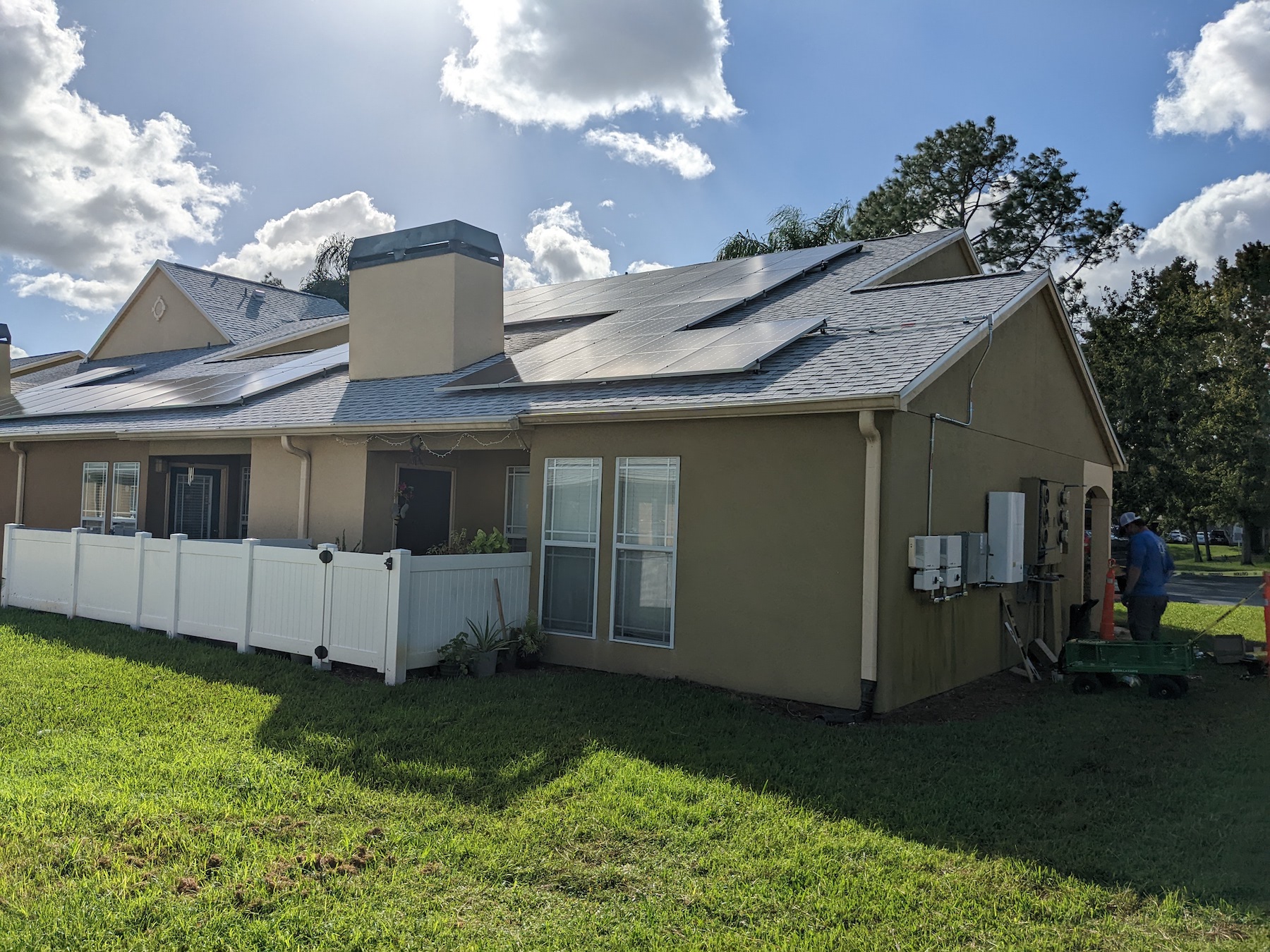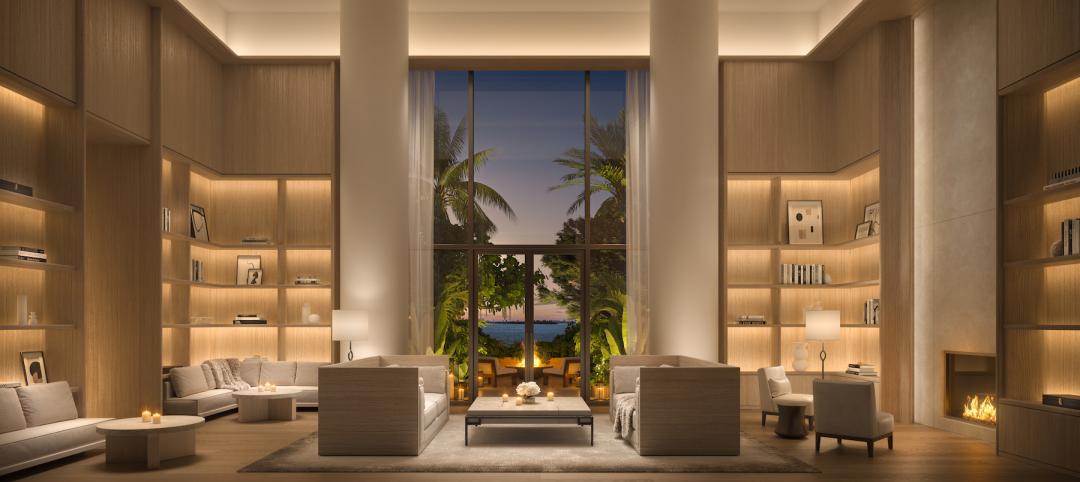Last January, a survey of 10,237 U.S. adults, conducted by Pew Research Center, found that 8% had installed solar panels on their homes, and another 39% had given serious thought to installing solar panels within the previous 12 months.
However, the growth in solar energy alternatives has been mostly confined to commercial buildings and to single-family detached households. Lower-income households, which represent 43% of the U.S. population, are more likely to reside in multifamily buildings that don’t have the mechanical/electrical infrastructure to distribute rooftop-captured solar energy to individual apartments.
Allume Energy is looking to change that. The Australia-based company, with offices in Los Angeles, recently completed its first successful U.S. deployment of SolShare, the company’s shared solar energy technology. Its pilot in the U.S. is a complex in Orlando, Fla., where Allume has connected 65 apartments. Another smaller project in Jackson, Miss., has nine apartment connections. In Jackson, the local utility lowered the application cost because the building caters to lower-income tenants.
Controlling the energy flow

Here’s how SolShare works: Energy from a rooftop solar array flows into the building’s inverter that changes the energy to AC electricity. The inverter sends the electrical current through the SolShare unit to grid meters that are hooked up to apartments. (One SolShare unit can feed up to 10 grid meters.) The electrical distribution moves among the grid boxes several times per second, so when one meter is configured with limits for a particular tenant, the incoming energy gets allocated to the other meters. Any overflow can be sold back to the local energy grid.
Melissa Bergsneider, an executive account manager for Allume Energy, explains that prior to the introduction of the SolShare solution, most landlords were distributing solar energy only to their buildings’ common areas, like a lobby or gym. Those that have been delivering solar energy to apartments were faced with the challenge of how to divide the energy if, for example, a tenant goes on vacation, or an apartment unit is vacant.
SolShare, on the other hand, is “behind the meter,” and its software lets tenants monitor the energy usage. Landlords can still set the rules for how solar energy is allocated throughout the building. One of the advantages of this system, she says, is that it can connect as many apartments as needed. And unlike other so-called “social” solar systems, SolShare provides solar energy at the point of generation rather than exporting it back to the grid.
Allume Energy, which has been in business since 2015, has found that SolShare is reducing tenants’ energy bill, on average, by 30-35%. Bergsneider says that some landlords have been offering Solar as a Service, and are charging tenants a monthly fee for access.
Tax credit boosts demand

Bergsneider declined to disclose SolShare’s cost. She does note, though, that on past projects, SolShare accounted for between 6% and 8% of the total system installation.
Allume Energy’s primary target is low-rise attached rental houses, although it has installed SolShare in mixed-use buildings with commercial tenants. Most of SolShare’s demand is for retrofitting existing buildings, and Allume has been working with solar installation partners; the company has a training program, and a team member is on site for each installation.
Bergsneider attributes demand to the Solar Investment Tax Credit, which offers a 30% credit for individuals installing solar systems on residential properties. This tax credit was extended as part of the August 2022 passage of the Inflation Reduction Act. Bergsneider says there’s a 20% “adder” credit for properties with lower-income residents.
SolShare also helps developers and landlords decarbonize their buildings as part of their Environmental, Social, and Governance goals.
Currently, Allume Energy is focusing its expansion on the Southeast in the U.S. It has also been getting interest for SolShare from building owners in the Northeast and West Coast. Internationally, Allume Energy is targeting Australia, New Zealand, and the United Kingdom.
Related Stories
Multifamily Housing | Aug 23, 2023
Constructing multifamily housing buildings to Passive House standards can be done at cost parity
All-electric multi-family Passive House projects can be built at the same cost or close to the same cost as conventionally designed buildings, according to a report by the Passive House Network. The report included a survey of 45 multi-family Passive House buildings in New York and Massachusetts in recent years.
Apartments | Aug 22, 2023
Key takeaways from RCLCO's 2023 apartment renter preferences study
Gregg Logan, Managing Director of real estate consulting firm RCLCO, reveals the highlights of RCLCO's new research study, “2023 Rental Consumer Preferences Report.” Logan speaks with BD+C's Robert Cassidy.
Adaptive Reuse | Aug 16, 2023
One of New York’s largest office-to-residential conversions kicks off soon
One of New York City’s largest office-to-residential conversions will soon be underway in lower Manhattan. 55 Broad Street, which served as the headquarters for Goldman Sachs from 1967 until 1983, will be reborn as a residence with 571 market rate apartments. The 30-story building will offer a wealth of amenities including a private club, wellness and fitness activities.
Sustainability | Aug 15, 2023
Carbon management platform offers free carbon emissions assessment for NYC buildings
nZero, developer of a real-time carbon accounting and management platform, is offering free carbon emissions assessments for buildings in New York City. The offer is intended to help building owners prepare for the city’s upcoming Local Law 97 reporting requirements and compliance. This law will soon assess monetary fines for buildings with emissions that are in non-compliance.
Sponsored | Multifamily Housing | Aug 15, 2023
Embracing Integrations: When Access Control Becomes Greater Than the Sum of Its Parts
Multifamily Housing | Aug 11, 2023
Hotels extend market reach with branded multifamily residences
The line separating hospitality and residential living keeps getting thinner. Multifamily developers are attracting renters and owners to their properties with hotel-like amenities and services. Post-COVID, more business travelers are building in extra days to their trips for leisure. Buildings that mix hotel rooms with for-sale or rental apartments are increasingly common.
MFPRO+ New Projects | Aug 10, 2023
Atlanta’s Old Fourth Ward gets a 21-story, 162-unit multifamily residential building
East of downtown Atlanta, a new residential building called Signal House will provide the city with 162 units ranging from one to three bedrooms. Located on the Atlanta BeltLine, a former railway corridor, the 21-story building is part of the latest phase of Ponce City Market, a onetime Sears building and now a mixed-use complex.
Senior Living Design | Aug 7, 2023
Putting 9 senior living market trends into perspective
Brad Perkins, FAIA, a veteran of more than four decades in the planning and design of senior living communities, looks at where the market is heading in the immediate future.
Multifamily Housing | Jul 31, 2023
6 multifamily housing projects win 2023 LEED Homes Awards
The 2023 LEED Homes Awards winners in the multifamily space represent green, LEED-certified buildings designed to provide clean indoor air and reduced energy consumption.
MFPRO+ New Projects | Jul 27, 2023
OMA, Beyer Blinder Belle design a pair of sculptural residential towers in Brooklyn
Eagle + West, composed of two sculptural residential towers with complementary shapes, have added 745 rental units to a post-industrial waterfront in Brooklyn, N.Y. Rising from a mixed-use podium on an expansive site, the towers include luxury penthouses on the top floors, numerous market rate rental units, and 30% of units designated for affordable housing.
















